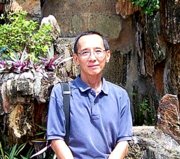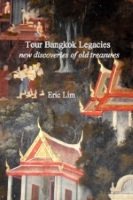- Home
- Bangkok Museums
- Samphanthawong Museum
Samphanthawong Museum
preserving the Chinese heritage
By Eric Lim
The Samphanthawong Museum in Chinatown Bangkok is a community museum that preserves the history of the early Chinese immigrants, their lives and contributions and the growth of the Chinese community in Chinatown Bangkok.
The museum was originally in Traimit Road located within the same compound as Wat Tramit at the entrance to Yaowarat, Chinatown Bangkok not far from the Odean Gate.
Wat Traimit is where the Golden Buddha is housed.
For an update on the new location of the museumThese museums are a series of local museums preserving the history of the communities in the various districts. Chinatown Bangkok effectively covers Samphathawong district, an area approximately 1.42 sq km packed with traders, goldsmiths, dry goods, provision shops, 22 shrines and six temples.
A series of pictures and text in Thai and English give the visitor an overview of the waves of immigrants from the early days, their lives and contributions as traders and labourers in the Thai economy.
The visitor’s attention is immediately focused on the son of Sin a Teochew buffalo trader from Ayutthaya who became the Governor of Tak province.
Phraya Tak as he was called played a pivotal role after the fall of Ayutthaya. He was later installed as King Taksin of Thonburi, the capital before Bangkok.
Because of his Teochew ancestry, King Taksin was able to call on the support of the Teochew trading community who gave him material support for the war against Burma.
As with the rest of South East Asia, most of the immigrants to old Siam were Hokien, Cantonese, Teochew, Hakka and Hainanese from southern China fleeing the famine brought on by natural disasters. The immigrants flocked to Bangkok and the coastal areas on the Gulf of Thailand.
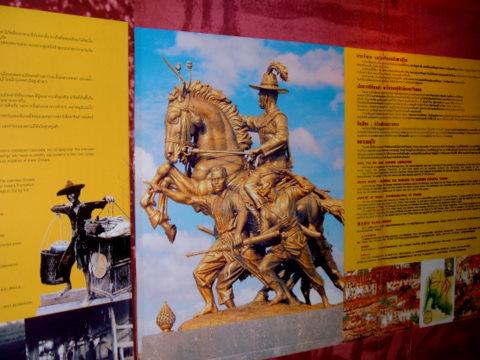
King Taksin the Great
Trade with China has been going on since the founding of Ayutthaya in the 14th century. However in 1727, trade boomed when China opened all her ports to rice imports from Thailand.
Besides rice, Thailand exported agricultural products and teak. Pottery and silk were the main imports from China. Chinese junks made frequent visits to Bangkok’s port.
The Bowring Treaty in 1855 opened up trade in Thailand to Britain. Other nations were soon to follow which increased the demand for labour. This together with worsening economic conditions in China gave rise to increased Chinese migration to Thailand.
The commencement of steamship travel in 1882 gave a further boost to Chinese immigration.
The second room in the Samphanthawong Museum features shops in old Chinatown, some of which are still present today. The goldsmith shop is still a common feature in Chinatown today.

Chinatown isn’t complete without the goldsmith shops
Rice, the staple food for the Chinese community, continues to be packed in these sacks.
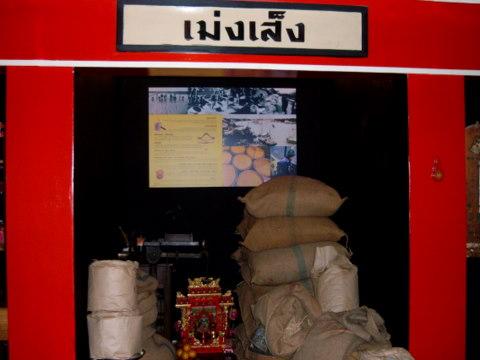
Rice store
Buy all the various sauces and preserved goods in earthen pots from this store.
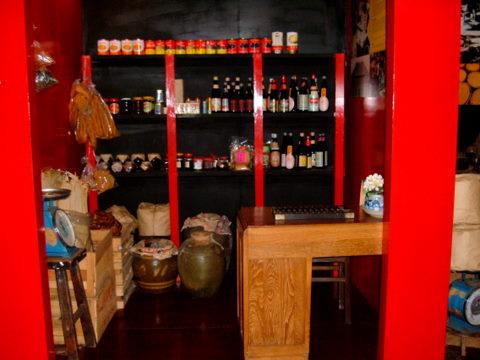
Chinese provision shop
Long before the days of the modern pharmacies, this was the neighbourhood drug store.
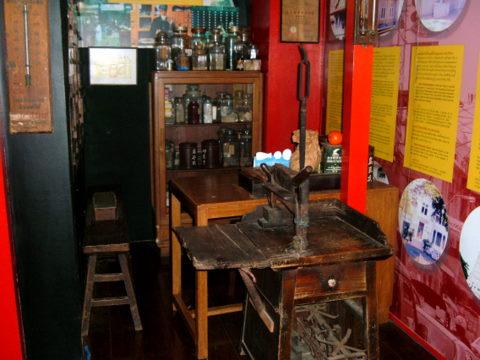
Traditional Chinese medicine shop
Besides history, the Samphanthawong Museum also features attractions in the district like the various street markets in Chinatown, like Sampheng and Saphan Han various temples, shrines and an old mosque!
When Bangkok was established as the capital, the Chinese village on the site of the Grand Palace was resettled to make way for the Grand Palace. The Chinese were resettled on a royal grant of land. The settlement gradually grew to be Chinatown today.

Old Sampheng
The place was called Sampheng or the "three Phengs".Today Sampheng is a thriving street market.

Soi Sampheng in 2007
Saphan Han at the other end of Chinatown was one of the embarkation points for the early Chinese immigrants and also a busy market.

Saphan Han in the early days
The market is still there though somewhat different.

Saphan Han in 2007
These attractions can be viewed by suggested walking tours through the various streets and alleys. Yaowarat, Chinatown Bangkok features the main street in Chinatown Bangkok.
Walking Street Chinatown and Chinatown sights are routes that take visitors through narrow lanes and alleys to view various places of interest, street markets and eating places.
The Chinese population in Thailand hit 800,000 in 1827 and 1.4 m in 1907. In a 1909 census, the Chinese in Thailand had reached almost 30% of the total population in the city and controlled most of the trade. 48% of the Chinese were Teochew.
Samphanthawong Museum no longer at Wat Traimit
On a visit to the Samphanthawong Museum on 17 December 2006, I was shocked to find that the museum has been demolished!
The entire site of the former museum has been completely leveled. A guard at the site said that the museum has been relocated to Wat Samphanthawong nearby.
However, nobody at Wat Samphanthawong knew anything about this.
Checks with the Bangkok Tourism Division for more information on the museum drew a blank. What a pity, I thought, that this museum in Chinatown on the history of Chinese immigrants to Thailand is now gone.
New location of the Samphanthawong Museum
But the museum didn’t move very far away, less than half a kilometer.
On 19 February 2010, Andy from Aachen Germany e-mailed me to inform me that the museum is now located in the Wat Pathum Khongkha School. Thanks Andy for the feedback.
The Samphanthawong Museum in Wat Traimit was demolished to make way for the new building to house the Golden Buddha and the Yaowarat Heritage Centre.
It would be unfair to compare this community museum with the brand new Yaowarat Heritage Centre in Wat Traimit which also covers the Chinese heritage in Yaowarat, Chinatown Bangkok.
Community museums are run by the Bangkok Metropolitan Authority (BMA) on tight budgets, which is why they are located in schools.
Their exhibits consist of display boards with pictures and text and some reconstructed models.
Sometimes I wonder why they didn’t combine this museum with the one in Wat Traimit. Perhaps different groups are involved in running these museums.
However these community museums are a wealth of information on the local communities even if they are lacking in presentation and style. Also they were established long before the fancy high tech gadgetry came about.
The Samphanthawong Museum can take pride that it is the original museum in Bangkok that preserves the legacy of the early Chinese immigrants in a simple yet informative way.
Map to the Samphanthawong Museum
View Samphanthawong Museum in a larger map
Back to the top of page
How to get there
Take the Chao Phraya River boat to the N5 Ratchawongse Pier in Chinatown. From the pier walk along Ratchawongse Road and turn right into Song Wat Road.
The entrance to Wat Pathum Khong Kha School is in Song Wat Road.

Entrance to Wat Pathum Khongkha School
Proceed to the building 2 on the right, the school administrative office. The museum is upstairs.
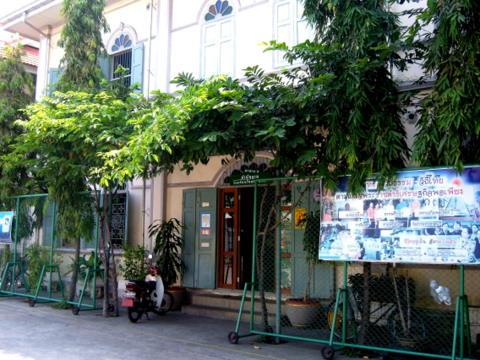
School office building
Opening hours
The Samphathawong Museum is open from Mondays – Fridays from 0800 – 1600 hours. Admission is free.
Hotels in Chinatown, Samphathawong district
Bangkok Centre Hotel Check Inn Chinatown Chinatown Hotel
Grand China Hotel Shanghai Mansion Bangkok
SK Boutique Mahanakhon Hotel
Acknowledgements
Except for the two present day photos of Sampheng and Saphan Han, all other photos are with the courtesy of Samphanthawong Museum.
To return to Chinatown Bangkok and for more Bangkok Museums.
My Journey through Thailand Part I The First Steps
This is my second e-book and the first in the series of travel journals on my trips to explore the various provinces in Thailand. This edition, which covers my travels from late 2009 to mid-2013, will guide you to historical sites, cultural monuments and exquisite Thai handicraft, across a vast spectrum of cultural and ethnic diversity.
You can have a virtual tour with this e-guide book or take the first steps yourself in this journey through Thailand.
My Kindle e-book

Search Tour Bangkok Legacies with DuckDuckGo
Chinatown hotels
Bangkok Centre Hotel
Check Inn Chinatown
Chinatown Hotel
Grand China Hotel
Shanghai Mansion Bangkok
SK Boutique Mahanakhon Hotel
My Journey through Thailand
Part I The First Steps
My Kindle edition

My Smashwords edition

